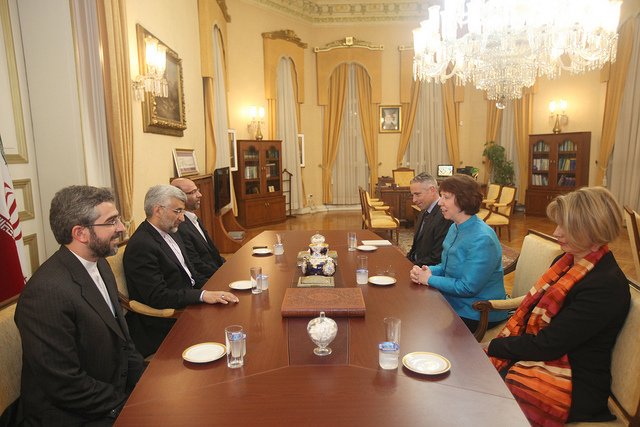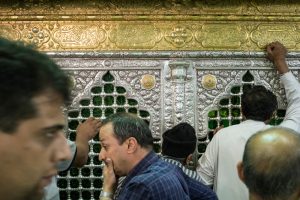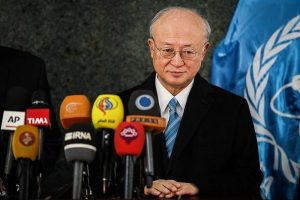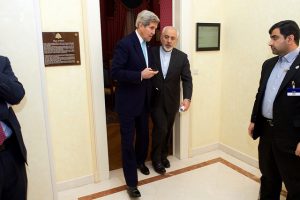by Laicie Heeley & Usha Sahay
After months of deliberation, Iranian negotiators and representatives of the 6-world power P5+1 negotiating team have agreed to meet on February 26 in Almaty, Kazakhstan. Hopeful watchers may read some symbolism into the location: Kazakhstan is one of the few nations to have voluntarily given up nuclear weapons, and no doubt Western negotiators hope for a similar outcome with Iran’s controversial nuclear activities. Previous negotiations with Iran fell apart in the summer of 2012, and the question on everyone’s mind is: will this time be different?
There’s reason to hope that it will. Certainly, some circumstances have shifted in ways that could be favorable to a deal. Most obviously, the squeeze of sanctions has made it much more difficult for Iran to defy the international community. The depletion of Iran’s currency reserves is testing the regime’s ability to sidestep sanctions, and leaders are worried about public discontent with the state of the economy. Iran has also been downgrading some of its enriched uranium to a level that can’t easily be converted to weapons-grade, which may be a small indication that the government is willing to moderate its stance. Key Iranian figures from the foreign minister to the intelligence ministry have also expressed a measure of willingness to cooperate with Western diplomatic efforts.
On the other hand, the path to negotiations has seen a number of stumbling blocks. Signals from Iran have been mixed at best. Supreme Leader Ali Khameini recently rejected the idea of negotiating with the United States, saying that Iran “would not be intimidated” by US pressure. Iran also just revealed plans to install thousands of new centrifuges at its Natanz nuclear facility. Finally, it’ll soon be election season in Iran, which means officials will be anxious not to be seen as caving under Western pressure.
Ultimately, though, all of this may not tell us much, because what lies behind us is far less important than what lies ahead. The hopeful or ominous developments of the past few months only matter insofar as they signal what negotiators will or won’t be willing to put on the table. To that end, it’s worth speculating not just about what this new centrifuge and that new statement might mean, but also about what compromises could be made to make this round the one that matters.
The crucial issue to resolve is Iran’s production of 20% enriched uranium, and Iran has been relatively more flexible on this than other matters. A workable deal might require Iran to deposit its existing stockpile of 20% enriched uranium abroad, stop enriching at the Fordow facility, and agree to limit future enrichment to a low level suitable for civilian power reactors. Under such a deal, Iran would also need to implement the International Atomic Energy Agency (IAEA) Additional Protocol, to facilitate future inspections. In exchange, the P5+1 could offer sanctions relief and a freeze on new sanctions.
That’s how a deal might ideally resolve the thorniest issues in Iran’s standoff with the West. But the talks could bring progress even if we don’t make it that far. An alternative strategy could focus on confidence-building measures, or “baby steps” that ease the two sides out of the straitjacket of mistrust that has constrained previous efforts. For instance, Iran could agree to temporarily halt uranium enrichment or to downgrade its existing stockpile of 20% enriched uranium to the less potent form needed for civilian reactors. In exchange, the P5+1 could agree to temporarily suspend some key sanctions, which would open the door for further sanctions relief once other issues (the Fordow facility, the Additional Protocol, enrichment levels in the future) are resolved.
Negotiators might also take a big-picture approach that brings in other, more long-standing concerns, such as Iran’s alleged links to terrorist groups, suspicions of previous weapons development, and the question of gradually normalizing diplomatic and economic relations between Iran and the West.
In sum, although some forecasts for the talks have been gloomy, there actually is no dearth of options available — that is, if negotiators want to take them. It’s almost a truism to say, but a rehash of last year’s negotiations will only bring a rehash of last year’s dismal outcome. As Einstein famously said, insanity is doing the same thing over and over again and expecting different results.
So this time in Almaty, let’s try a new approach, one oriented around mutual concessions rather than stubborn digging into unworkable positions. If we do that, with any luck, this time really can be different.
– Laicie Heeley is the senior policy analyst and Usha Sahay a Hurbert J. Scoville Peace Fellow, both at the Center for Arms Control and Non-Proliferation, a Washington-based non-profit think tank.
Photo: The 19 September 2012 meeting of EU foreign policy chief Catherine Ashton and Dr. Saeed Jalili, the Secretary of Iran’s Supreme National Security Council, in Istanbul, Turkey. (Credit: European External Action Service – EEAS)






What if what is asked of Iran is unreasonable? A crisis is manufactured and then we ask a nation to prove that it is not guilty of the chareges we lay upon its door. We want that nation to understand that we are very insecure and it owes to disprove any intention of hostility towards us. The truth is that the whole shenanigan has been concocted for couple of decades by our ally in Middle East and when a story gets old people may forget the fact it is a story and it was a fiction in the first place. That is why even the views of our own intelligence agencies are brushed aside. How do they dare to state the facts when we like to uphold our fiction which is to the contrary? Isn’t at the root of this circus the US pledge to Israel codified by law that she should always have the upper hand in Middle East when it comes to arms and related technology?
Ekhvan Safa I know many accept it as a given that Israel cooks up all this nonsense. My first suspect is Rand Corp. – a think tank with military roots. And the timeline is a lot longer than 2 decades, as will be shown by looking at the terms of reference when the Shah was negotiating to buy U.S. power stations. Nor does the mischief end there. The device known as the NPT TRAP involves more than deception ; it is itself a distraction by being unreasonable. http://www.payvand.com/news/04/dec/1186.html
I thought a sensible assessment would be in the ballpark of https://lobelog.com/irans-civilian-nuclear-program-a-primer/